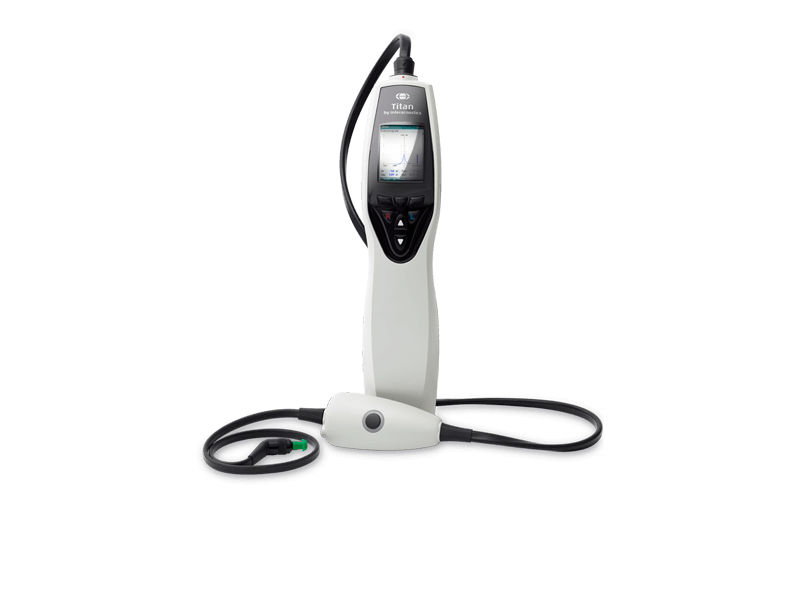OAE Testing with PE Tubes
This quick guide describes the procedure when wishing to perform an OAE test on a patient with PE-tubes.
When performing an OAE test the in-ear detection ensures that that the probe is properly inserted in the ear, as well as calculates the correct stimuli level for the testing.
I the patient has PE-tubes inserted, the Titan will in many cases indicate out-of-ear, because of the hole in the eardrum. In this case, follow the procedure as described below.
Prepare the instrument
- Turn on Titan by pressing the R or L button.
- Select the desired OAE test protocol from the dropdown list.
- Select the ear for testing.
Test environment
The ideal test environment is a quiet room. High ambient background noise adversely affects OAE measurements.
Prepare the patient
The patient should be sleeping or in quiet relaxed state. Talking, swallowing, blinking, crying or movement may affect testing.
Place transducer
Place the probe in the ear – the light will turn green when a good seal is obtained.
Run test
When the probe check indicates out-of-ear, hold down the start button for 5 seconds. Now, the screen on the Titan will indicate ‘Forced Start’. When the button is released, the test will start and the text ‘*711 coupler calibration used’ is stated at the top of the graph.

Picture 1: After holding down the ‘Start’ for 5 seconds, ‘Forced start’ appears in top of the screen.
Picture 2: A measurement performed using forced start, will be indicated by the text ‘*711 coupler calibration used’, also in the saved session.

